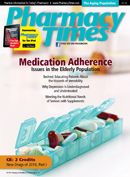Publication
Article
Pharmacy Times
Pharmacy Insights: News & Trends
“Super Agers” Hold Genetic Keys to Longevity
As the nation’s senior population soars due to the aging of baby boomers, researchers are delving deeper into questions surrounding the genetics of longevity—specifically, what traits do healthy, active centenarians have in common?
That was the question researchers at the Albert Einstein College of Medicine of Yeshiva University asked themselves when they embarked on the Longevity Genes Project more than a decade ago. The trial began in 1998 as a study of healthy seniors between the ages of 95 and 112. Since then, it has grown to include more than 500 centenarians and near-centenarians and more than 700 of their children.
The research, now called the LonGenity study, is directed by Nir Barzilai, MD, a professor of genetics and medicine and director of the Institute for Aging at the Albert Einstein College of Medicine. His work is the focus of a newly launched Web site, SuperAgers.com.
Along with results of the trial, the site features inspiring stories of 4 seniors—Lilly Port (96), Harold Laufman (98), Irma Daniel (103), and Irving Kahn (104)—who have followed their passions well into their 90s and beyond.
“The goal of the Longevity Genes Project is to understand how centenarians live so long,” Dr. Barzilai said. “What is it in their genetic makeup that allows them to get to this age and remain healthy?” Dr. Barzilai and his team highlighted major discoveries their research has yielded, including:
• The identification of at least 3 genes thought to promote longevity
• Evidence that longevity is inherited from generation to generation
• The finding that those with exceptional longevity are more likely to have high levels of HDL or “good” cholesterol
They hope these and other findings from the study will lead to new drug therapies that mimic the benefits of protective genes. “I hope that in our lifetime, we will be able to use medicine in order to prevent age-related diseases,” Dr. Barzilai said. “The results of this research can be directly translated into the development of a drug.”
Unfortunately, a simple pill to delay the onset of aging is not yet an option, and likely won’t be for the millions of baby boomers just entering their 60s. In the meantime, study participant Irma Daniel offers pragmatic advice on the topic of aging gracefully: “Work! It’s the best thing for not getting old.”
Experts Take Aim at Subpar Rx Drug Labels
Prescription container labels are long overdue for a patient-friendly makeover, and it may happen sooner rather than later. Experts from the US Pharmacopeial Convention (USP) are pushing for changes to the design and content of drug labels, which they argue are a major source of patient misunderstanding, nonadherence, and medication errors.
According to USP, 46% of patients have misunderstood dosage instructions and 56% have misunderstood auxiliary warnings. The problem is exacerbated by low health literacy, which drastically increases a patient’s chances of misreading a label. The content of prescription labels and instructional materials also varies widely, even among prescriptions for the same drug.
The USP report cites a “lack of universal standards” as the primary driver of these inconsistencies, and puts forth a list of recommendations that could be incorporated into state laws, regulations, and guidelines. The report also calls for more scientific research to identify the key components of a successful prescription label.
One change that USP analysts said would improve understanding is to make dosing instructions more explicit. For example, instead of reading “Take 2 tablets twice daily,” labels should read, “Take 2 tablets in the morning and 2 tablets in the evening.” Instructions for hourly dosing intervals—such as “every 12 hours”— could be challenging for patients with limited numeracy skills, and should be avoided.
The ideal patient-centered label should serve as a primary source of information, standing in for the pharmacist and physician when neither is available for counseling. “Although other written information and oral counseling sometimes may be available,” the report stated, “the prescription container label must fulfill the professional obligations of the prescriber and pharmacist.”
USP is currently seeking feedback from pharmacists on the newly proposed guidelines. Comments should be submitted to [email protected] by the deadline of March 31, 2011.

Newsletter
Stay informed on drug updates, treatment guidelines, and pharmacy practice trends—subscribe to Pharmacy Times for weekly clinical insights.






